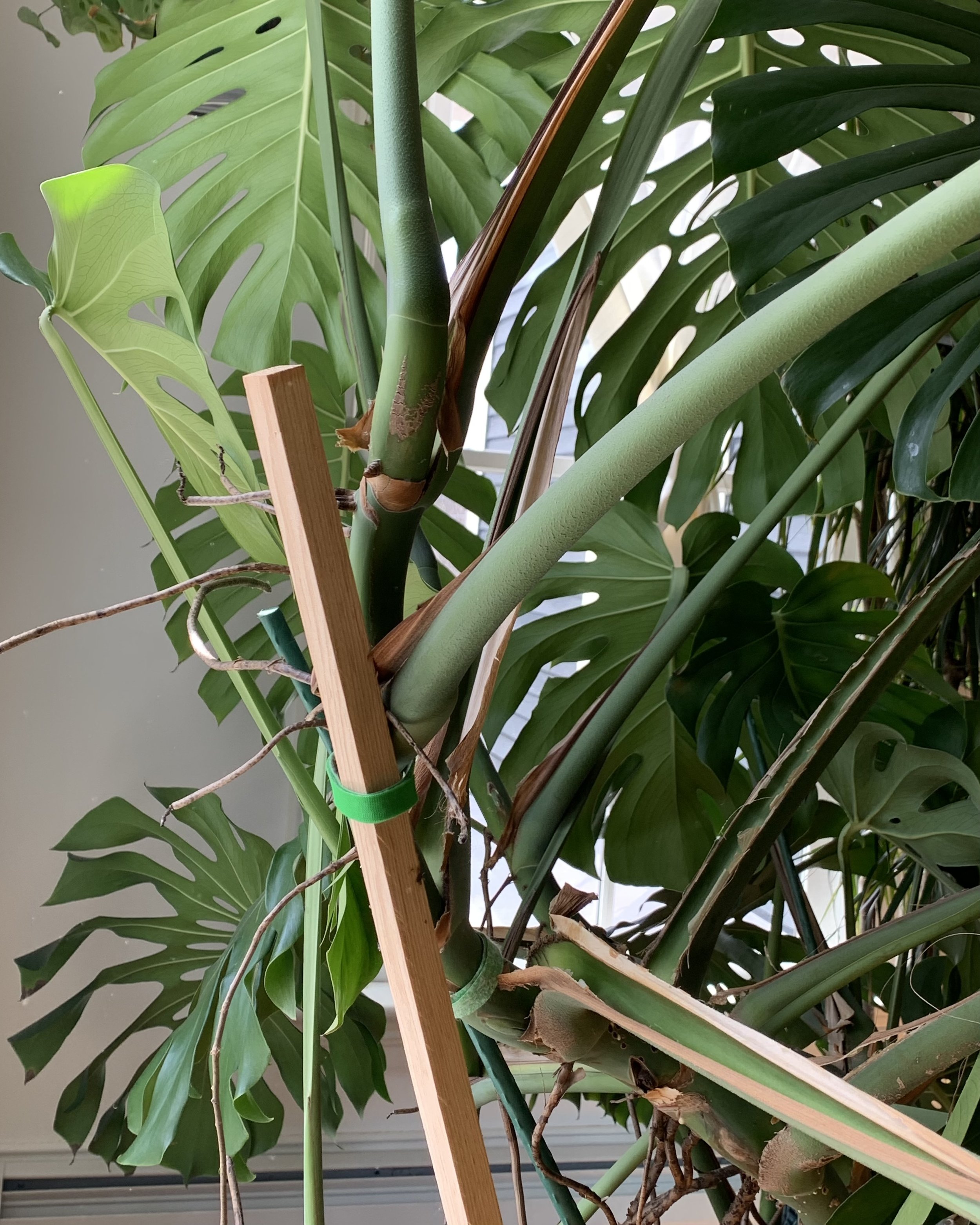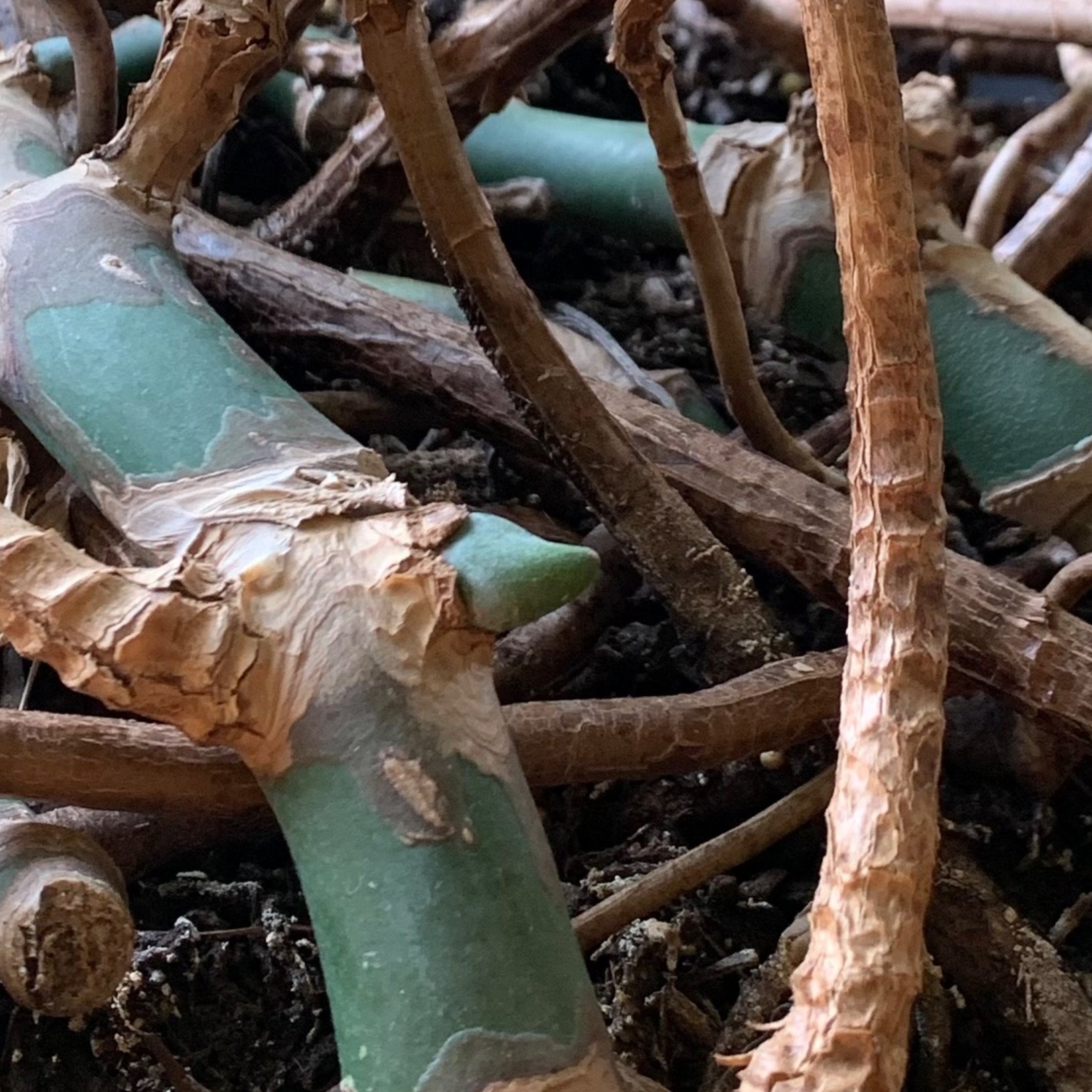Personal Plant-Care tips: Mega Monstera
I love plants. I know that about myself. You might know that about me too. As Davey and I prepare for our big move, this fact has become even more abundantly clear to me. I have formed deeper emotional bonds with our houseplants than I even realized. It’s been tough deciding which plants we will take with us and which we will leave behind. There have been tears. While most of my collection will be gifted to friends, a few select specimens will be making the journey with us because I just can’t bring myself to part with them.
This mega monstera is one of the keepers. When I posted this photo on Instagram, I was inundated with questions about care. I didn’t have the time or capacity to answer those questions individually, but I thought it would be fun to tackle a few of them here. After all, I love talking about plants almost as much as I love caring for them.
But first, some disclaimers: I am only speaking from my own experience caring for my own plant. I am not an expert. I do not have all the answers. What has worked for me might not work for you. This is for fun.
LIGHT. Monsteras thrive in bright indirect light. This plant as lived between South and West facing windows covered by thin curtains for the past 4 years. These lighting conditions have allowed the plant to grow enormous leaves with lots of fenestrations (the holes in the leaves). For the first 3 years of its cloned life, this monstera stayed relatively small because it lived in lower light conditions. Monsteras make such excellent house plants because they are incredibly tolerant of indoor conditions. But if there isn’t enough light, they will only survive rather than flourish.
I rotate this plant once, maybe twice per year. The leaves will turn to grow towards the light. I rotate smaller plants a lot more frequently to keep their growth more even. But since this plant is so large I do it less often. It is one of the strategies I use to keep the plant balanced: a vine will grow in one direction for a year, then I will rotate the plant 180 degrees and it will start to grow in the opposite direction for another year. The vines of this plant almost snake back and forth in an accordion pattern. This plant is also particularly photogenic right now because I just recently turned it around. So for the past 8-12 months it has been facing the other direction and all the leaves turned the same way to face the light. In the couple of weeks since I snapped the photo above, the leaves have already started to turn back towards the windows.
SOIL. This monstera is planted in organic potting soil. Nothing fancier than that. I re-potted her last summer for the first time in probably 2 years. This plant is so large that re-potting is a real endeavor and I don’t do it as frequently as I should. One of the questions/concerns that came up a lot was how tiny this pot is compared to the plant. It’s a 14 inch pot. After we move to our new home and have a place for her, I will be re-potting into a larger vessel with fresh soil. I just need to be sure of the location first, because once this gets a bigger pot it will be almost impossible for me to move…I am not that strong.
PRUNING/PROPAGATING. It feels a little scary at first to cut parts off of plants, but they appreciate being pruned. I prune and take cuttings spring through summer. I use garden clippers to cut back monstera vines every once in awhile. I will likely give this plant a big cut when we get settled into a new home. I usually like to cut younger vines and leave the two original vines alone to keep growing. I make sure the section I am cutting off has some aerial root growth and at least one leaf. Then I put the cuttings right into a pitcher of water near a window. I change out the water once a week (more often if I think of it) and wait a few weeks for new root growth. The new roots will be small and white and start to pop out of the submerged aerial root and the vine itself. Eventually, I pot up the cuttings in new soil and give them to friends. My original monstera has generated around 30 new plants in the 8 years that I have cared for it. Plants are so cool.
After awhile, the parent plant will show signs of new growth too! Pruning encourages the plant to put more energy into new growth points, so you will start seeing little pointy green nubs growing out of the vine. Eventually these will open a tiny leaf.
SUPPORTS. Monsteras are vines and need support to grow vertically. This plant has two main vines (the original cuttings) that have sprouted secondary vines over the years. Currently, there are 5 active growth points on this plant, but I can see that maybe two more vines will sprout out this spring/summer. I am using a 5 foot wooden stake as the main support at the moment. The main vine is loosely secured to the stake with a repurposed Velcro strip from a head of lettuce. This method of staking has always worked for me, so I have never made or invested in a moss pole. When the aerial roots are long enough, I tuck them into the soil so they can turn into regular roots and take in nutrients for the plant.
WATER. For the past four years, this plant has lived on a second floor landing. Our house does not have central air and we are very cheap about heating expenses, so this plant lives in fairly extreme temperature conditions (think 90 degrees Fahrenheit in the summer and 55 degrees in the winter). The temperature and relative humidity during different times of year strongly influence how active the plant is and how much water it needs. The top inch or two of soil should dry out between waterings. Monsteras will suffer from root rot and yellowing leaves if they are in soggy water all the time. I water every 5-7 days during the summer and every 12-15 days in the winter. But I don’t hold myself to that schedule. If the plant looks thirsty (the leaves are drooping or curling, the soil is dry and contracted), I water it. If the soil is still wet from my last watering, I skip it.
I usually use recycled bath water to care for our plants. So after a bath, I leave the tub full until the next day so it can cool off. Then I water the plants. In our current house, we have a magnificent clawfoot tub. It’s big enough for me to lay down in and it holds enough water to cover the needs of all of the 200+ plants we keep. Seems like a waste to let it go down the drain. I often get questions about soaps, bath salts, or other bath products whenever I talk about this online. I use bar soap, shampoo, sometimes conditioner, sometimes bubble bath, somethings bath bombs or salts…they all seem to be fine for the plants. I don’t know the science behind it, but I do know that I have been doing it for years and my plants are thriving. Soapy water can even be used to control pests in soil and on leaves. Occasionally (definitely not as often as I should) I also dust the leaves on watering day with a damp cloth.
MOVING. I will be renting a van to transport the plants we are keeping. I feel incredibly grateful that I am in a position to make such a decision and very lucky and fortunate to have a friend willing to house our keepers for us while we look for a new home. My plan is to wrap the plants with brown paper to keep each one as contained and secure as possible. Then I’ll pack them snuggly into the van for the drive. Where we are moving is a bit warmer than New Hampshire, so they will live in a shady-ish spot in friend’s back yard and enjoy the spring/summer outside until we are ready to take them back. (At which point I will likely need to rent another van…) I am already mentally preparing myself for broken leaves/vines/branches/paddles and reminding myself that new growth will spring from the broken places and all will be well with time.
So that’s that. I hope you glean some useful information and value from this plant ramble. If you have extra tips about what works for you, please feel free to leave a comment!



